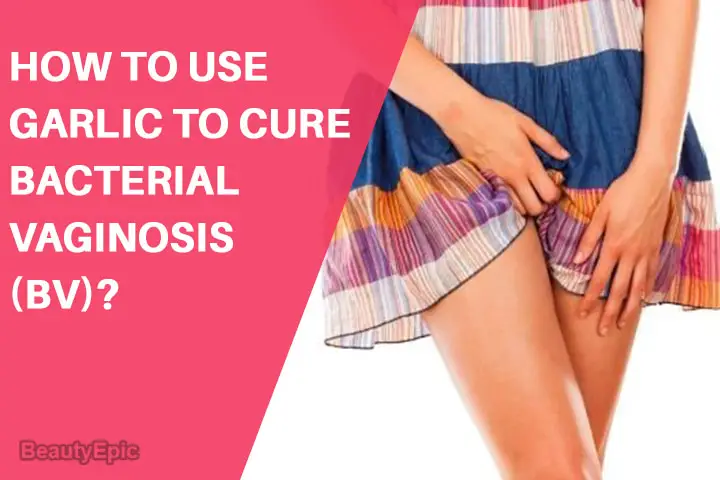
Important: This article is for informational purposes only. Please read our full disclaimer for more details.
The vagina houses a lot of bacteria, good (lactobacilli) and bad (anaerobes). In bacterial vaginosis the natural balance gets upset when too much of bad bacteria change the normal quantity of good bacteria. The symptoms are smelly vaginal discharge and vaginal pain and itching, or burning during urination. To treat the infection in its initial stages, and what could be better than treating it with a natural remedy like garlic. Below are a quick and easy ways to use garlic for bacterial vaginosis infection. Have a look!
Does Garlic Help BV?
- Garlic contains many compounds, one of which is allein, which gives it antimicrobial properties against a wide variety of bacteria, even those strains that are resistant to many antibiotics.
- It is antiviral, antifungal and antiparasitic too.
- Being anti-bacterial, it inhibits the growth of bacteria.
- It is also a cure for yeast infections hence, gives an instant relief from itchiness and inflammation.(1)
How To Use Garlic for Bacterial Vaginosis (BV)
Garlic finds place in almost every kitchen for cooking purposes. Its time you start storing it in your medicine cabinets as well. Garlic is widely used as a cure for vaginosis.
1. Garlic Clove for BV
You’ll need:
- clove of garlic
Preparation time: 2 minutes.
How to do:
- Take a clove of garlic and remove its peel.
- Sew a string through middle of it.
- Before going to sleep, use a tissue to clean the vagina and remove the discharge.
- Then gently insert the clove in the vagina.
- Remove the clove in the morning by pulling the string out and discard it in the dustbin.
Repetitions: Repeat the next day if required and continue till the itchiness is gone.
How it works: The garlic aids in killing the bacteria in the vagina.
Tip: For severe infections, cut open the garlic clove before inserting it in the vagina. The cut makes the potency of the garlic clove stronger.(2)
2. Garlic Paste for BV
You’ll need:
- 3 – 4 garlic cloves
Preparation time: 2 minutes.
How to do:
- Mash garlic cloves to make a paste.
- Apply the paste on the affected areas and leave it for about 20 minutes.
- Rinse with warm water.
Repetitions: Follow this process daily once till the infection gone.(3)
3. Garlic Pills for BV
You’ll need:
- 500-mg garlic tablets
How to take:
- Take two 500-mg garlic tablets (aged or dried).
Repetitions: Twice a day for seven days with your meals.(4)
[ Read: How to Use Apple Cider Vinegar for BV ]
Tips and Precautions:
Be patient with home remedies because they don’t work out the same way for everyone. In any case, they are better than taking antibiotics because they don’t have any side effects. Take the following precautions while using garlic for bacterial vaginosis:
- If a high dose of garlic is inserted in the vagina, it will often “burn” the healthy skin. So the use of garlic, whole, cut, or crushed, will depend on the severity of the infection.
- Although the garlic clove cannot enter the uterus through the cervix, it can get pushed into the pocket between the cervix and the vaginal wall. So be gentle when retrieving the garlic clove in the morning.
Be careful if you have grown your nails. Long sharp nails can scratch the already sore skin caused by the infection.
You Might Also Like:
- How Effective is Coconut oil for BV
- How to Use Hydrogen Peroxide for BV
- How to Get Rid of BV with Coconut Oil
- How to Use Boric Acid for BV
- How To Apply Estrogen Cream With Your Finger?
- How Long Does Clindamycin Cream Stay In Your System?
- 10 Foods to Help Your Vagina Health
Image:- 1















